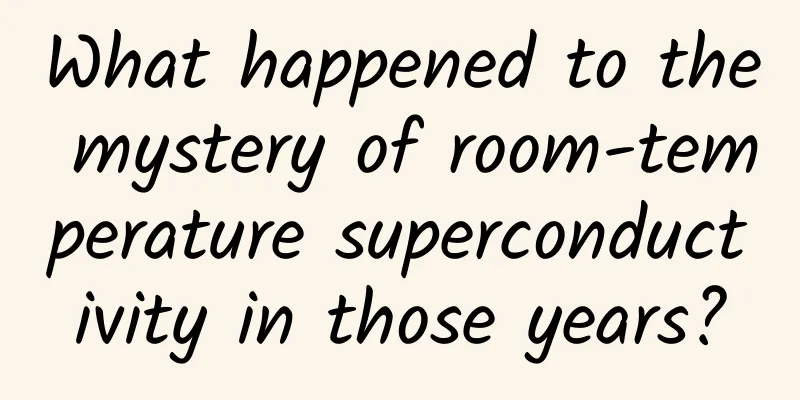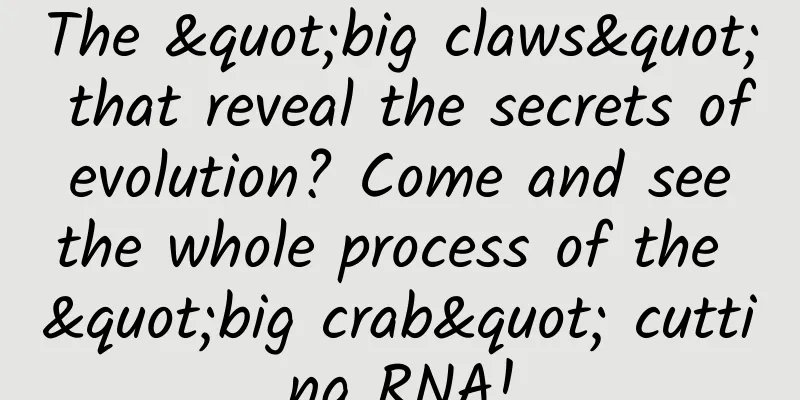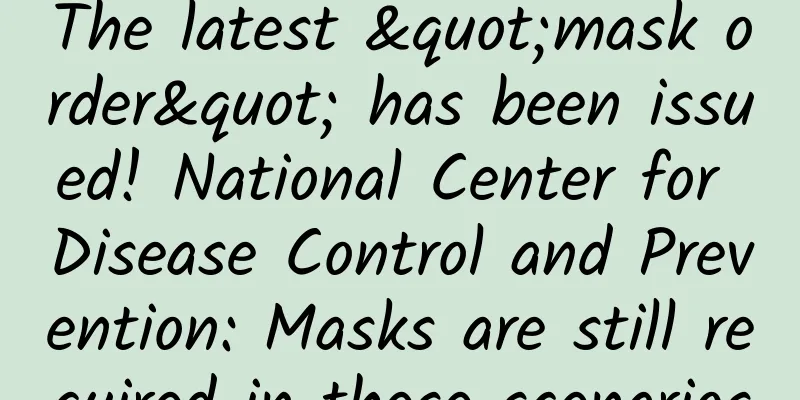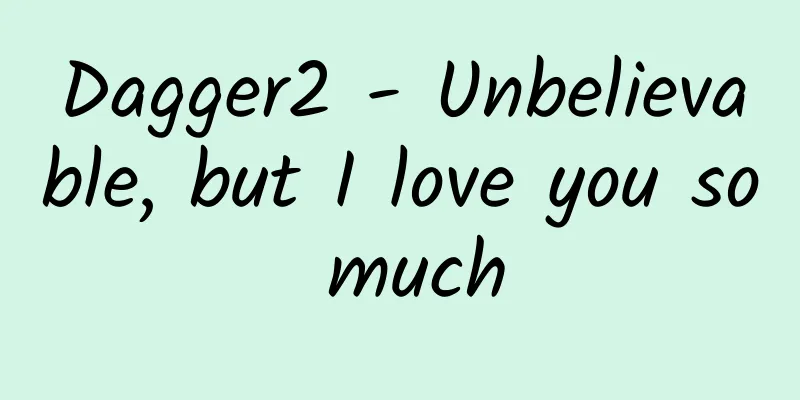What happened to the mystery of room-temperature superconductivity in those years?

|
Recently, South Korea's room-temperature superconductor "LK-99" has become famous, and major media platforms have paid close attention to it. The superconductivity community has stepped up its reproduction work. However, whether it is experimental or theoretical calculation, the results of different papers are very different. Some papers give several pieces of evidence to support superconductivity, while others say that it is just ordinary magnetic materials or even false signals of impurities. The prospects of LK-99 have been constantly reversed with the update of papers, and the fog shrouding LK-99 seems to be getting thicker. In the more than 100 years of people's exploration of superconductivity, LK-99 is not the first material that has been claimed to achieve room-temperature superconductivity, nor is it the first material that has been controversial in subsequent verification. In fact, many so-called "room-temperature superconductors" have not been concluded in the end, and physicists have nicknamed them "unknown superconductors" (USO) in imitation of UFOs. So, how many suspected room-temperature superconductors have there been in the world? What is their follow-up? Now, how many types of room-temperature superconductors are there? Recently, a Korean team's arxiv article has once again brought the concept of room-temperature superconductivity to the forefront. In recent years, related big news has come one after another, arousing people's curiosity and expectations, but there has not been a satisfactory result yet. In fact, the pursuit of room-temperature superconductivity is not something that has only begun in recent years. Over the past decade or so, teams have repeatedly claimed to have found superconductors at or near room temperature. Back in October 2020, the Dias team in the United States published a room-temperature superconductivity "result" in Nature, claiming that the carbon-sulfur-hydrogen (CSH) compound synthesized by green laser induced superconductivity at a pressure of 267GPa reached a superconducting transition temperature of 288K. From then on, when people discuss issues involving superconductivity, they will sigh: Although the pressure is ridiculously high, room-temperature superconductivity is finally here. Diaz and the retracted superconductivity paper Unfortunately, after a period of waiting, before the experiment was repeated, Diaz's melons were eaten a lot. Peers suspected that the experimental data of the work had been changed and manipulated. For example, after careful analysis, theoretical physicist Hirsch of the University of California published two papers questioning and criticizing the results. After a long tug of war, the article was finally withdrawn in September 2022. Three years have passed in a flash, and room-temperature superconductivity is back. At the American Physical Society meeting in early March 2023, Dias announced the discovery of another room-temperature superconductor, claiming that the lutetium nitrogen hydrogen (Lu-NH) compound synthesized under high temperature and high pressure conditions can achieve room-temperature superconductivity at 294K under a pressure of 1GPa, and published it in Nature. Having been "dazzled" by the previous achievement, everyone has taken a more "let the bullet fly for a while" attitude, and Hirsch, who had previously "angrily criticized" Dias, also came to the venue to "confront" in person. Sure enough, not only has this result not been widely replicated, but many verification experiments have been denied, such as the experiments of the Nanjing University team and the Institute of Physics team in China. Everyone's attention on room-temperature superconductivity has also shifted to Dias, the scientist who "discovered" room-temperature superconductivity twice, and began to understand his origins and past. As a result, his peers found similarities between his doctoral thesis and many papers, and the charts in one paper were surprisingly similar to other documents, pointing out that Dias may have engaged in academic misconduct. As a result, the CSH-related papers were also investigated and the paper was retracted. Dias has received widespread attention, which is inseparable from people's increasing awareness of the importance of superconductors and the development of modern science and technology. In fact, there have been many examples of claims of finding room-temperature superconductors. For example, in 2018, two Indian researchers claimed that adding nanosilver powder to gold nanoarrays could obtain superconductivity at 236K. Their data was questioned by Skinner of MIT because the noise pattern of the experimental data was the same, which was impossible in real experiments. Later, Indian scholars refuted the rumor and said it was a "quantum noise effect"... For example, in 2016, Kostadinov claimed to have found a superconductor with a transition temperature of 373K, but he did not disclose the composition and preparation process of the superconductor, and there was no follow-up in a confidential manner. There are many earlier ones: in 2012, a team announced that graphite powder specially treated with pure water has superconductivity at 300K and normal pressure; in 2003, a team claimed that n-type diamond, after coupling with electrodes and vacuum, can have a superconducting phase at room temperature and pressure... We have to admit that before the emergence of true room-temperature superconductors (or before reliable theories prove that it is impossible), similar news may come one after another, and after possibly attracting a wave of attention and provoking a stock fluctuation, people will return disappointed. It is undeniable that the true arrival of room-temperature superconductors will bring great changes to the world, but the road to exploration may be long and arduous, so we might as well pay attention and look forward to it with a calm mind. Why is it that after so long, we still cannot be sure whether it is superconducting? You may be confused by a question: Is it not a "black or white" question whether a material is a superconductor? Can it be quickly and widely confirmed or denied? In this way, there will not be so many ambiguous questions, and there will not be a situation like LK-99 that has been eating melons for 3 weeks. In fact, the problem is not that simple. For a new superconducting material to be recognized, the author needs to provide convincing data and other colleagues need to be able to repeat the same effect - the superconducting material in Beijing should also be superconducting in New York, which is the persistent belief of physicists. In order to determine whether a new material has superconductivity, it is always necessary to use an instrument to do something on a sample. Therefore, the verification of suspected superconductors can be divided into at least two parts: obtaining a high-quality sample and completing the test of the sample. Preparing samples is not an easy task. Although people often joke that preparing samples is like refining elixirs, after all, not all elixirs can make people immortal (it seems that all elixirs cannot make people immortal). For superconducting materials, "high-quality samples" often represent a clean single crystal of the right size; the crystal defects used for testing should be as few as possible, and impurities should be almost completely excluded. Therefore, although polycrystalline materials with disordered grain boundaries and a large number of impurities are easy to sinter, the test results are difficult to convince strict reviewers and peers. To prepare usable samples, expensive high-purity raw materials, complex sintering conditions, and untold experience and some luck are required. Even if a usable sample is obtained, how to use it to measure convincing data is also a technical job. It is simpler to measure samples of normal-pressure superconductors, but there are still many steps. The sample first needs to be cleaned and polished with fine sandpaper - if the grinding force is light, the impurities on the surface of the sample are not stripped off, which will cause false signals; if the grinding force is heavy, the sample may fall apart directly. After the sample is several millimeters long, 4 conductive electrodes must be glued side by side, and the resistance is tested in a similar way to the internal connection of the volt-ampere voltmeter in middle school. The electrodes must be glued in parallel and of equal length, and a sufficient distance must be left between them. From polishing to sticking electrodes, these delicate jobs under the microscope must be completed quickly, otherwise the sample will oxidize and deteriorate in the air, and all the previous work will be wasted. Verification of high-pressure superconductivity will be even more difficult. Not to mention that the experimental conditions of millions of times the atmospheric pressure have discouraged most laboratories from participating in the verification efforts, the testing technology itself is incredibly complicated. It is necessary to find a way to evenly apply and transmit pressure to the sample without damaging it; the sample and the pressurizing device must be cooled and magnetically applied; four wires must be drawn from the pressurizing mechanism to connect the voltmeter and ammeter of the test equipment; and the noise signals generated by the complex device and extreme conditions must be suppressed... Therefore, high-pressure superconductivity seems to have a somewhat unfortunate fate: the sample of metallic hydrogen superconductor evaporated and nothing came of it; although carbon-sulfur-hydrogen with a critical temperature of more than 200K was well-known for a while, it was eventually withdrawn last year; and the lutetium-nitrogen-hydrogen superconductor in March this year is now also close to a hasty end... Superhydride: Great power brings about miracles? Having said so much, what kind of material will room-temperature superconductors appear on? Among all the "room temperature superconducting materials", the most theoretically possible and currently the most studied is superhydride. According to the BCS theory (named after the three discoverers, Bardeen, Cooper, and Schrieffer) that can explain conventional superconductivity, the critical temperature Tc of a superconductor is inversely proportional to the square root of the atomic mass M that constitutes the superconductor. In this way, scientists naturally think that if they want to increase the superconducting critical temperature, the best way is to use the lightest element - hydrogen. In order to turn hydrogen gas, which boils at -253°C under normal pressure, into a solid conductive material called metallic hydrogen, a pressure of several million atmospheres must be applied. As it happens, the increase in pressure is also conducive to the increase in the critical temperature of superconductivity. Therefore, hydrogen is injected into the diamond anvils of high-pressure superconducting laboratories around the world. However, it is not easy to compress gaseous hydrogen into a solid, keep it stable, and then complete the measurement. Decades have passed, and almost no one has successfully prepared metallic hydrogen to this day. The only claim of success came from American Dias, who claimed to have achieved room-temperature superconductivity in March. However, after being questioned by his peers, he claimed that the sample was not properly stored and vaporized and disappeared. This unsolved case has been left unresolved in a ridiculous way. Since metallic hydrogen is too difficult to prepare, scientists turned to rare earth hydrides. The lanthanide elements at the bottom of the periodic table can combine with multiple hydrogen atoms to form molecules and exist relatively stably. Such compounds containing multiple hydrogen atoms are called hydrogen-rich compounds. If the hydrogen content in the molecule is even higher, it is called a superhydride. Among them, the most studied material is the La-H system. Under high pressure, laser irradiation of a mixture of lanthanum and hydrogen in a certain proportion can produce LaH10, which is the superhydride with the highest critical temperature experimentally verified so far. It can achieve superconductivity at about 252K (-13℃) under 1.65 million atmospheres. A hydrogen cage surrounding a La atom in LaH10 crystal At present, the research on rare earth hydrides is still mainly focused on binary systems. With the deepening of research, ternary system superhydrides have gradually attracted attention, and perhaps in the future it can refresh the critical temperature record of high-pressure superconductivity. It should be pointed out that hydrides are a type of conventional superconductor that can be explained and predicted by the BCS theory proposed in the 1950s. The success of hydrides is certainly another proof of the BCS theory, but its significance is almost only in science and extreme conditions experimental technology. The pressure of millions of atmospheres determines that it is almost impossible to become practical. Perhaps, in the future, more "room temperature superconducting materials" will appear and be falsified; perhaps, room temperature superconductivity under normal pressure does not exist at all, but human beings will not stop exploring superconductivity under mild conditions. This is the expectation of engineering and the pursuit of science. With the advancement of experimental technology and breakthroughs in basic theory, more "room temperature superconducting materials" will appear in the future. |
>>: Guangzhou residents saw dolphins in the Pearl River! How did the dolphins get into the river?
Recommend
How to reduce APP uninstall rate? Here are seven ways!
The mobile application market is now a crowded ma...
Cause of hair loss caused by stress found
Hair loss is one of the new "incurable disea...
43 apps including WeChat, Alipay, and Douyin will undergo "aging-friendly" transformation
[[360191]] According to domestic media reports, L...
The whole story of the lawsuit between Tencent and Qihoo 360
The dispute between 360 and Tencent has finally c...
Why is plague so difficult to eradicate? The plague that killed hundreds of millions of people was not spread by rats
It is a great feat that humans have been able to ...
Summary of information flow advertising optimization techniques!
1: Bid If the account is old and new products are...
To see what the inside of a snake looks like, he lets a python eat him alive
In 2014, the Discovery Channel designed a program...
How did the chicken, a “little cowardly bird”, conquer the world step by step?
© JOHN TOWNER Leviathan Press: What's your fa...
Review summary: Why do cash loan products fail in operation?
This article is a review and summary of the failu...
Sedum sedum is released! Is Sedum a succulent plant?
Recently, the internationally renowned journal Pl...
MINI is going to use electronic gear levers, how can you still use front-wheel drive BMW with mechanical gear levers?
Recently, MINI officially released official pictu...
Uber: A look at how Uber makes money and turns losses into profits in one article
Since Uber withdrew from China, its voice in Chin...
"Intensive cultivation" to play 4G, Coolpad's transformation to dual-stick T1 is popular
"Wealthy and willful" and "Interne...









